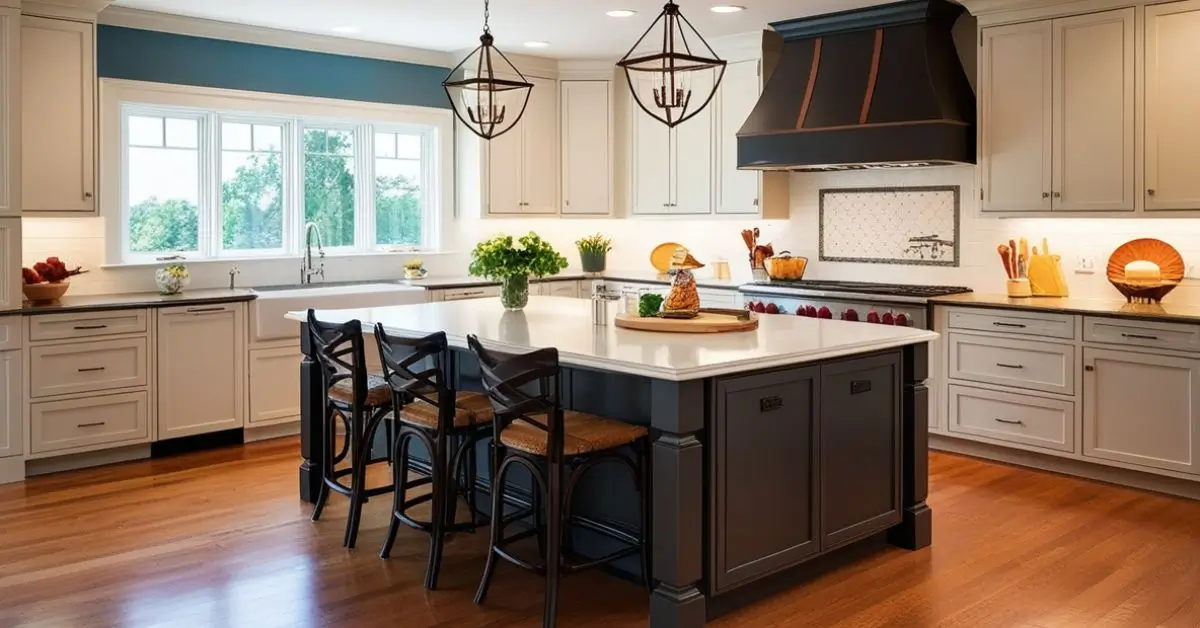A kitchen island is more than just an addition to your kitchen—it’s a centerpiece that combines aesthetics, utility, and social functionality. As the heart of many homes, the kitchen deserves thoughtful design, and a well-planned island can elevate the space in ways unimaginable. Whether you’re designing a new kitchen or remodeling an old one, incorporating an island can add significant value to both your home and your daily routines. This comprehensive guide explores the various aspects of kitchen islands, from their functionality to styling tips.
The Evolution of Kitchen Islands
Kitchen islands have come a long way. Historically, kitchens were functional spaces with minimal design elements. Over time, as kitchens evolved into more social and family-centric areas, the need for a central space emerged.
In the 20th century, kitchen islands became a staple in open-concept designs, blending cooking areas with dining and living spaces. Today, they serve multiple roles, acting as preparation stations, storage units, dining areas, and even work-from-home hubs.
Benefits of Having a Kitchen Island
a) Enhanced Workspace
One of the most practical benefits of a kitchen island is the additional counter space. It offers a dedicated area for food prep, baking, or plating dishes, making kitchen tasks more efficient.
b) Improved Storage
Modern kitchen islands often come equipped with drawers, shelves, and cabinets, providing much-needed storage space for pots, pans, and kitchen gadgets. Some even feature built-in wine racks or pull-out trash bins.
c) Multi-Functional Utility
Kitchen islands can double as breakfast bars, dining tables, or even homework stations for kids. Incorporating seating transforms the island into a social hub where friends and family can gather.
d) Appliance Integration
Many kitchen islands are designed to accommodate appliances like dishwashers, microwaves, or cooktops. This integration saves space and makes the kitchen layout more efficient.
e) Enhanced Lighting
Strategic lighting above the island can illuminate the workspace and add ambiance. Pendant lights, for example, are a popular choice for creating both functional and stylish lighting.
f) Aesthetic Appeal
A kitchen island serves as a focal point, tying together the design of your kitchen. With customizable materials, colors, and finishes, you can make it a reflection of your personal style.
Types of Kitchen Islands
Not all kitchen islands are created equal. Here are some common types to consider based on your space and needs:
a) Stationary Islands
These are fixed units that are often built into the kitchen layout. They provide stability and allow for heavy-duty tasks like chopping or rolling dough.
b) Portable Islands
If you’re short on space or prefer flexibility, portable islands on wheels are a great option. They can be moved as needed and stored away when not in use.
c) Peninsula Islands
These are extensions of the main countertop rather than standalone units. They are ideal for smaller kitchens that need extra workspace without the bulk of a full island.
d) Double Islands
For large kitchens, double islands offer a luxurious option. One can be dedicated to prep work while the other serves as a dining or social area.
Key Considerations When Designing a Kitchen Island
Designing the perfect kitchen island requires careful planning. Here are some factors to keep in mind:
a) Available Space
Ensure there’s enough room around the island for easy movement. Ideally, leave at least 36-48 inches of clearance on all sides.
b) Purpose
Define the primary purpose of your island. Will it be used for cooking, storage, dining, or all of the above? Your answer will dictate the design and features.
c) Size and Shape
The island’s size should complement your kitchen’s layout. Rectangular islands are popular, but L-shaped, T-shaped, and circular options can work depending on the space.
d) Materials
Choose durable materials like granite or quartz for the countertop, especially if the island will be used for food prep. The base can be crafted from wood, metal, or even concrete for a unique look.
e) Seating
If you plan to add seating, opt for stools that fit comfortably under the countertop. Overhangs of 12-18 inches are ideal for legroom.
f) Appliance Placement
Incorporating a sink, stovetop, or other appliances? Ensure proper electrical and plumbing work is planned beforehand.
Stylish Ideas for Kitchen Islands
a) Bold Color Choices
A brightly colored island can add a pop of personality to a neutral kitchen. Consider hues like navy blue, emerald green, or mustard yellow.
b) Contrasting Materials
Mix and match materials for visual interest. For example, a wood base paired with a marble countertop creates a sophisticated look.
c) Industrial Touches
Metallic finishes, exposed screws, and reclaimed wood elements give an industrial vibe, perfect for modern or rustic kitchens.
d) Farmhouse Charm
Shiplap paneling, butcher block countertops, and vintage hardware can create a cozy, farmhouse-inspired island.
e) Luxury Features
Add features like a built-in wine cooler, charging station, or waterfall edge countertops for a luxurious touch.
Kitchen Islands for Small Spaces
Even small kitchens can benefit from an island. Here’s how to make it work:
- Choose a compact design: A narrow or circular island takes up less space.
- Opt for multi-functional pieces: Use an island with built-in storage or fold-out sections.
- Consider a movable cart: A portable island can be tucked away when not in use.
- Use light colors: Lighter tones create an illusion of space.
Kitchen Islands and Sustainability
Eco-conscious homeowners can make sustainable choices when designing a kitchen island:
- Reclaimed Wood: Use salvaged materials for the base or countertop.
- Energy-Efficient Appliances: If adding appliances, choose energy-efficient models.
- Non-Toxic Finishes: Opt for low-VOC paints and sealants to maintain indoor air quality.
The Cost of Kitchen Islands
The cost of a kitchen island can vary widely based on size, materials, and features. Here’s a rough breakdown:
- Basic Models: $500–$2,000
- Mid-Range Options: $3,000–$8,000
- High-End Designs: $10,000 and above
To save costs, consider DIY options or pre-fabricated units. Custom islands are pricier but offer more flexibility.
Maintenance Tips for Kitchen Islands
- Clean Regularly: Wipe down surfaces daily to prevent stains.
- Seal Countertops: If you have porous materials like marble, seal them regularly to prevent damage.
- Organize Storage: Use drawer dividers and organizers to keep items accessible.
- Inspect Appliances: Regularly check built-in appliances for functionality.
Conclusion
A kitchen island is a versatile addition that can transform the heart of your home. By carefully considering its purpose, design, and materials, you can create a space that enhances both functionality and style. Whether you’re hosting a dinner party, helping kids with homework, or simply enjoying a morning coffee, a well-designed kitchen island will be at the center of countless memories.
Investing in a kitchen island is not just about improving your kitchen—it’s about enhancing your lifestyle. Take the time to design one that perfectly suits your needs, and enjoy the benefits for years to come.











